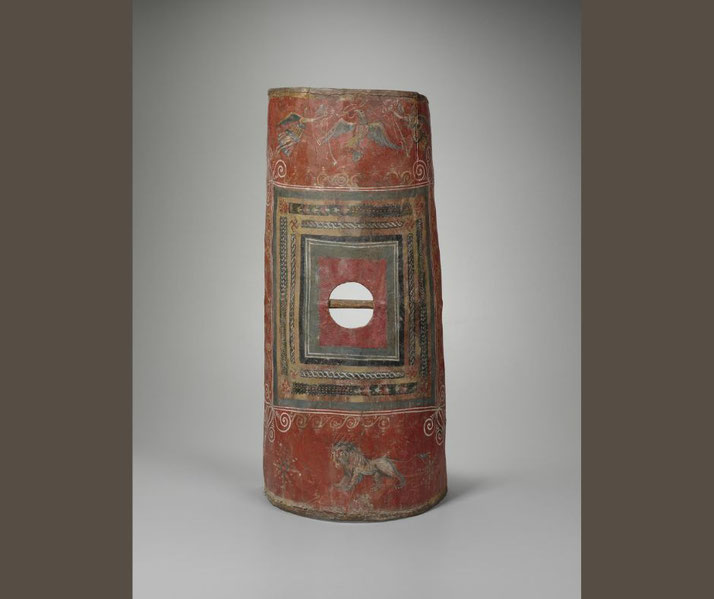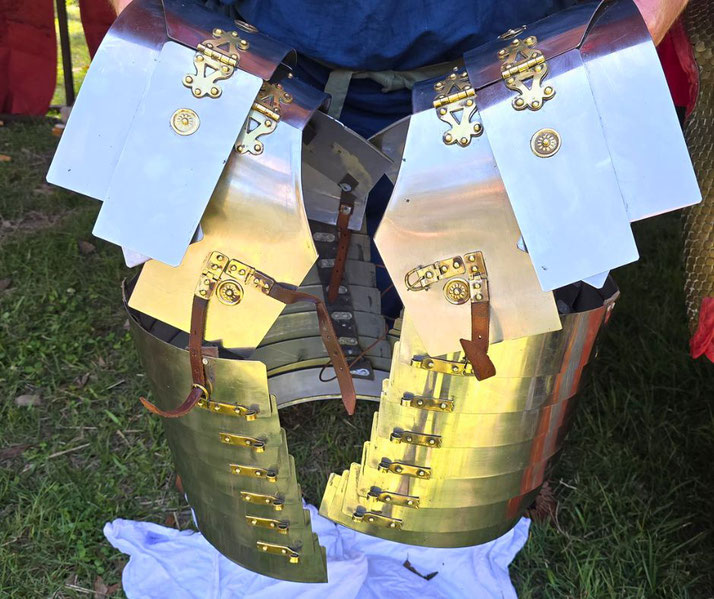Lethal war machine: Weapons and armour of the Roman legions

Roman legionaries were professional soldiers recruited from Roman citizens who served in the ancient Roman army.
They served for a minimum of 20 years, with the promise of land and other benefits upon completion of their service.
After that, legionaries were organised into legions, which were units of around 5,000 to 6,000 soldiers commanded by a legate, with each legion consisting of smaller units called cohorts and centuries.
The Roman legionaries were some of the most powerful and well-trained warriors in history, feared and respected by their enemies.
They were known for their well-designed weapons and armour that gave them an edge in battle. Also, these arms enhanced their effectiveness in combat.
Weapons
Pilum (spear)
The pilum was the main weapon of the Roman legionary. It was a javelin designed to be thrown at the enemy before engaging in hand-to-hand combat.
It had a long, thin wooden shaft and an iron shank and tip, which were designed to bend upon impact.
This was meant to make it difficult for the enemy to remove from their shield or body.
It weighed around 2kg and could be thrown up to 30 metres.
When used well, this weapon disrupted the enemy's formation and created chaos, which allowed the legionaries to close in for the attack.

Gladius (sword)
The gladius was the quintessential Roman sword, used primarily for thrusting in close combat.
It had a short, double-edged blade that was ideal for stabbing the enemy in the chest or abdomen.
The hilt was made of wood or bone and fit snugly in the hand. This design gave the wielder excellent control.

Spatha (another sword)
The spatha was a longer and heavier sword than the gladius. It was primarily used by cavalry and auxiliary troops, but also by legionaries in the later stages of the Roman Empire.
The blade was longer and broader, making it ideal for slashing and cutting. It was more effective in open battle formations.

Pugio (dagger)
The Pugio was a dagger that was carried by Roman soldiers as a backup weapon.
It was used for close combat and for personal protection. The Pugio was a useful weapon, used for stabbing, slashing, and thrusting.
It was often used alongside the gladius. This pairing let the legionary switch between the two weapons depending on the situation.
Armour
Scutum (shield)
The scutum was the Roman shield and one of the most important pieces of armour used by the legionary.
It was large and rectangular, made of layers of wood and covered with canvas or leather.
The edges were sometimes strengthened with iron or bronze to protect against damage and to enhance its strength.
The shield weighed up to 10kg and had an intentional curved shape. This let the legionary hold it close to the body to provide excellent protection from incoming attacks.
The Scutum locked together with the shields of other legionaries, which created an unbreakable wall that was difficult for the enemy to breach.

Galea (helmet)
The galea was a Roman helmet and was designed to provide maximum protection to the head and neck.
It was made of metal and had an open face design which provided the legionary with excellent visibility in battle.
The galea also had cheek guards and a neck guard that provided additional protection.

Lorica segmentata (body armour)
The lorica segmentata was a type of Roman armour that was made of overlapping iron plates.
It was one of the most effective types of armour used in the ancient world and provided excellent protection to the torso and shoulders.
The lorica segmentata allowed the legionary to move freely in battle due to its design that allowed easy movement.

What do you need help with?
Download ready-to-use digital learning resources
Copyright © History Skills 2014-2025.
Contact via email
With the exception of links to external sites, some historical sources and extracts from specific publications, all content on this website is copyrighted by History Skills. This content may not be copied, republished or redistributed without written permission from the website creator. Please use the Contact page to obtain relevant permission.





